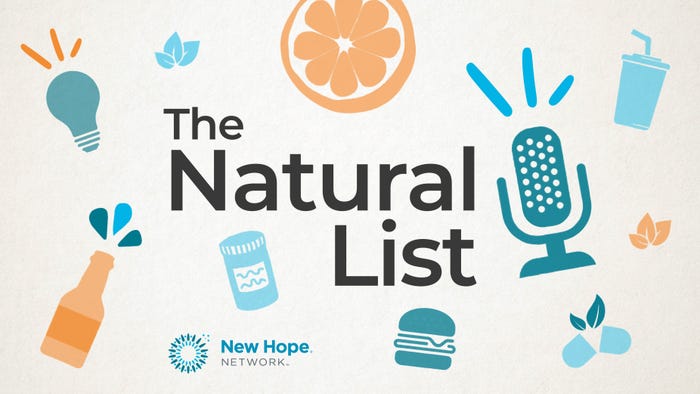9 beverage industry trends for 2019 and beyond
Beating the competition means meeting consumers’ needs before they find other solutions. Review these top trends to stand out in the beverage case.

Consumers are moving away from sugary, caffeine-laden drinks and looking for healthy alternatives that are both healthy and environmentally friendly. Increasingly, start-ups are filling the void that traditional beverage companies haven’t yet reacted to.
Emerging brands are grabbing market share at record-breaking speeds, dwarfing the traditional five-to-seven-year lead time and minimizing the usual multimillion-dollar investments behind new beverages.
These start-ups are ramping up through nontraditional sales routes such as e-commerce and promotions via social media and word-of-mouth. To compete, established brands must adapt and become more nimble.
Pete Grego, director of contract manufacturing for Nor-Cal Beverage co-packer, shared the top trends he expects to see through 2019 and into 2020.
Organic and non-GMO means regulated and guaranteed clean ingredients, and today’s consumers are willing to pay a premium for them. They don’t want boring, healthy foods, though: “treat-yourself” dessert and energy drinks are faves.
Naturally low sugar or low-glycemic carbohydrates might have started trending with the paleo and keto movements, but now there’s a widespread belief among nondieters that such ways of eating are better for overall health. Sweet low-calorie options such as agave, stevia and monk fruit are replacing high fructose corn syrup and pure cane sugar. People also prefer natural juices over synthetic or “bad for you” sugar alternatives.
Plant-based ingredients—specifically soy, pea proteins and Lentein— have grown in popularity as plant-based ingredients of choice. Ingredients such as these offer a creamy texture that can make a drink satisfying, plus they naturally add fiber and protein to the drink's nutritional value, a bonus for a busy person who can’t always sit down to eat a full meal.
Marine-based collagen, previously associated only with beauty products and skin applications, is cropping up as an ingredient in not only supplements and vitamins, but matcha teas and protein powders. Seaweed or seagrass taste better than Americans tend to believe, and they are rich in protein and antioxidants, although they can add odd green, blue or black colors to your product.
Turmeric, a rhizome similar to ginger, is known for its superb anti-inflammatory properties. This bright yellow and orange superfood is high in antioxidants, low on the glycemic index and supports an even blood sugar response associated with reduced cravings. Some people even claim it enhances cognitive abilities.
Ingredients with tart flavors, such as apple cider vinegar and hibiscus, can reduce or replace sweeteners in beverages. The tart flavor has become increasingly popular with the rise of kombucha and IPA sours. The acidity of these ingredients also helps maintain proper beverage pH, which makes meeting food safety standards easier and allows a company to market a preservative-free beverage.
Botanical ingredients—such as lavender, coriander and elderflower—add unique flavors and some are known to aid digestive health. Not all claims on botanical ingredients can be scientifically supported, but customers are eager to try something new and exotic.
Alternatives to dairy are increasing as consumers turn to nondairy milk and plant-based nutrition. Since 2012, the sales of nondairy milk have grown 61 percent. Although cow’s milk is still the most commonly consumed form of milk, nondairy milk is closing the distance. Popular podcasters and health influencers can’t stop talking about food allergies and possible digestive disorders exacerbated by milk, so adding a nondairy option to your line will keep you on trend. The most popular kinds of nondairy milk are almond, soy and coconut, although other dairy alternatives such as hazelnut, pecan and flax milk are also becoming more popular.
Cannabidiol (CBD), one of the compounds found in cannabis and hemp, is the hottest trend in beverages right now. Researchers have long been interested in the therapeutic uses of CBD, which does not include enough THC—the compound that gives marijuana its mind-altering effects—to cause euphoria. Proponents of CBD tout its potential in treating a wide range of ailments including epilepsy, chronic pain, anxiety and even the side effects of cancer treatment. However, many medical experts caution that more research is needed to ascertain CBD’s uses and side effects.
While CBD is not intoxicating, its legality varies by source and from state to state. And even source distinction has caused confusion for some enforcement agencies.
CBD is appearing in cold-brew coffee, tea, beer, lemonade and more. Manufacturers claim that CBD beverages will provide “functional chills,” “natural” ways to destress, and strong but mellow buzzes. If your state allows the use of CBD, be aware that emerging brands using this ingredient are seeing their sales heat up.
Knowing the latest trends will help you orient your product in the market, keep an eye on your competitors and stay abreast of any wide-reaching changes in the industry. If your company isn’t capitalizing on these trends, it’s not too late to begin considering them.
Emily Page, CEO of Pearl Resourcing, has managed and launched multiple seven-figure brands in Costco, Williams-Sonoma, Kroger and Amazon.
About the Author
You May Also Like




